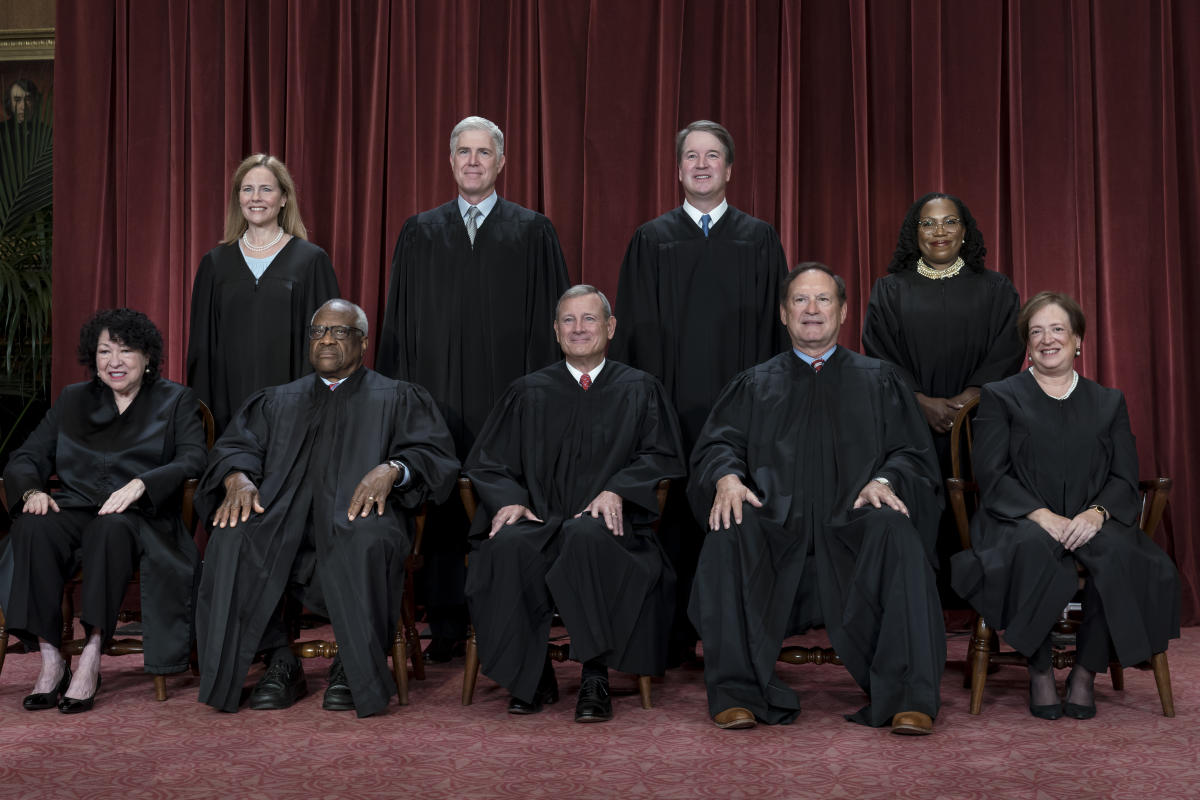Smoke from Canadian wildfires prompted air quality warnings in more than a dozen U.S. states on Wednesday, with health officials warning people in sensitive groups such as children, the elderly or those with respiratory illnesses to limit their time outdoors or stay indoors.
Yahoo News spoke with health experts who explained how wildfire smoke affects your health, what you can do to protect yourself and how long the effects of the thick orange haze blanketing much of the country will last.
How do I check the air quality in my area?
“The U.S. Air Quality Index is getting a lot of media attention right now, but it really is fantastic,” said Dr. Brady Scott, fellow at the American Association for Respiratory Care. “Because you can just enter your zip code and understand a little bit what the air quality is where you are. If it’s green or yellow, it’s okay for most people. If it is orange, there is concern that some people, especially those with respiratory conditions, may be affected. If you are in the red zone and especially if we are in the purple or maroon zone, even if you are a supposedly healthy person.”
Okay, it says I’m in an area under an air quality warning. I can see and smell the smoke. What should my main health concerns be?
“The amount of particulate matter is so high that even for a normal person with no underlying medical conditions, it can still be unhealthy and dangerous if there’s prolonged exposure,” said Dr. Purvi Parikh of the Allergy & Asthma Network. “The longer you’re exposed to it, the more likely it is to cause problems. And what happens with smoke is that these fine particles can get deep into your lungs, and these particles contain chemicals, pollution, and carbon monoxide that can be harmful to your lungs. So over time, it can cause inflammation. And for some people, if you’re exposed to it consistently, it can even lead to conditions like asthma.”
What is considered long-term exposure? A couple of hours?
“Yes. But like everything in medicine, it depends on the individual and your basic health status,” says Parikh. “So if you are a very healthy person, a few hours with a mask should not be a problem, with no long-term consequences term. But if you’re exercising outdoors or if you’re pregnant, or an older person with heart or lung disease, or someone who already has an underlying lung condition or immune disorder, I would try to limit that exposure as much as possible.”
Is wildfire smoke the reason my allergies have gotten worse in recent days?
“Absolutely,” says Parikh. “It can make your allergies worse because it actually amplifies them, causing more inflammation, making your symptoms much worse as well. It makes your eyes burn and your skin itch even more. The same goes for your cough: more coughing, wheezing, more asthma attacks. And if you suffer from sinus allergies, this can definitely make it worse because that’s the first entry point for wildfire smoke – through your nose.”
Officials are encouraging people, especially children or those with underlying conditions such as asthma, to limit outdoor activities or stay indoors. What if I have to go outside? Do I have to wear a mask?
“The best thing you can do is check what the air quality is like, and if it’s at an unhealthy level and you can stay indoors, that’s the best thing you can do,” Parikh said. “But if you absolutely must go outside, we recommend wearing a mask to limit your exposure. And the medical grade N95 or KN95 masks are best, similar to COVID times, because they prevent some of those particles from getting into your lungs. But even a surgical mask or other type of barrier can be helpful.”
Wait, I read somewhere that while N95s can protect against fine particles, they cannot protect against the dangerous gases in wildfire smoke. Is that true?
“It is true, it is very likely that we are even exposed to some gases,” says Parikh. “You can’t filter everything out with that N95 mask. I mean, you see how blurry it is in New York City, you can’t see any buildings down the street. Therefore, even with a mask, we recommend limiting time outdoors as much as possible.”
What about pets?
“Absolutely,” Parikh says. “Pets are also at risk because they suffer from many of the same lung diseases as humans. So of course they are at risk too.”
“I would be concerned if I had a pet outside for extended periods of time or if he was doing a lot of strenuous exercise or running around,” says Scott. “The thing is, they breathe the same air we do, and this can lead to respiratory irritation and can also cause breathing difficulties for them.”
How long will our exposure last?
“One of the challenges with wildfire smoke is that it really depends on weather conditions – the way the wind carries the smoke or rain into the forecast,” said William Barrett, national senior director of clean air advocacy at American Lung Association. “The primary concern with wildfire smoke exposure is that particulate pollution can persist for extended periods of time and often requires changes in wind patterns or precipitation to suppress the pollution and move out of the area. That is what wildfire smoke brings into the community and what it will ultimately bring out.”
What should people who still have symptoms do when the smoke clears?
“So let’s say once the air quality returns to safe levels and you notice that you still have some sort of symptoms a week or two later, you should get checked by a doctor,” says Parikh. “Because what happens is that sometimes the exposure can weaken your lungs, weaken your sinuses and then predispose you to developing allergies or leaving behind inflammation.”






